La Grande Motte: touring the 20th-century modernist dream of a French paradise resort
La Grande Motte and its utopian modernist dreams, as seen through the lens of photographers Laurent Kronental and Charly Broyez, who spectacularly captured the 20th-century resort community in the south of France
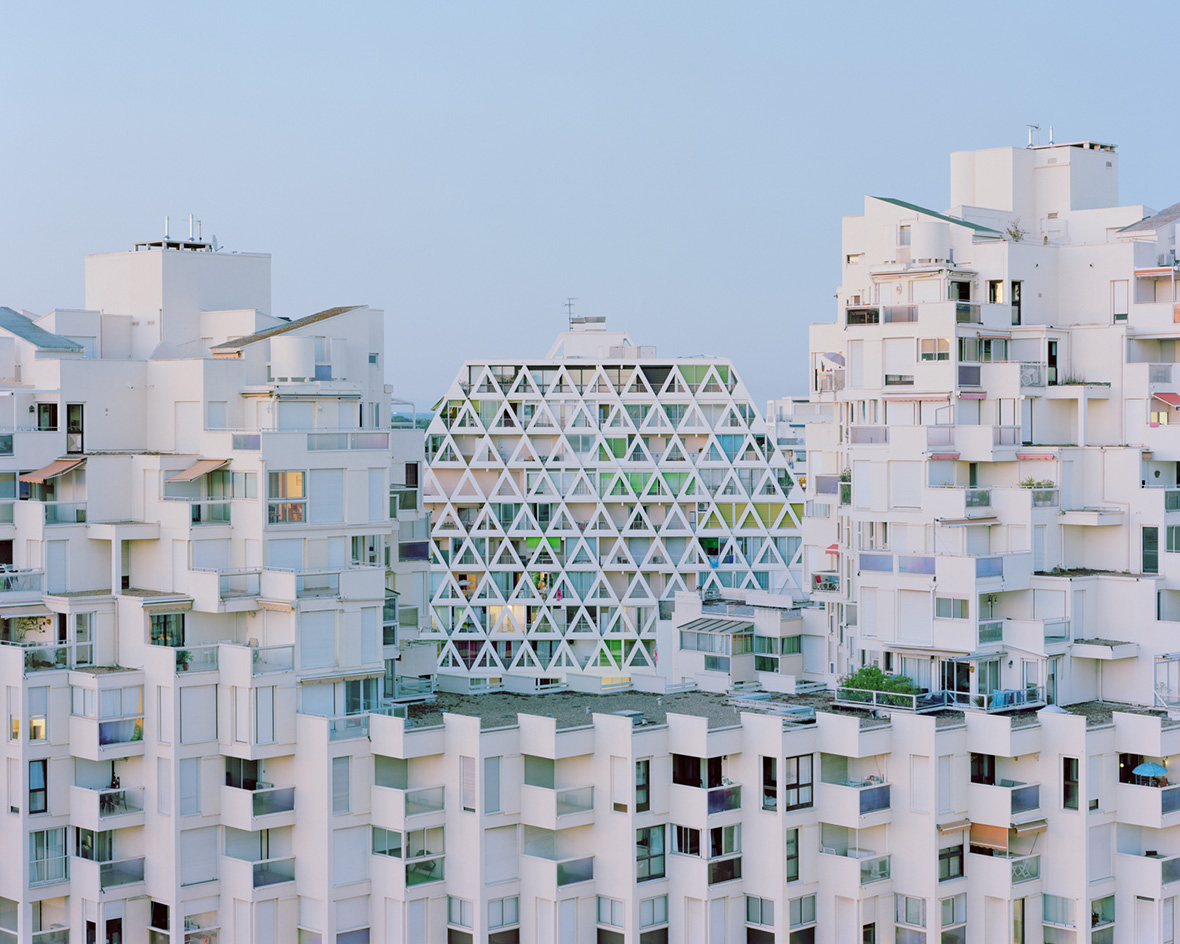
Laurent Kronental & Charly Broyez
La Grande Motte belongs to a particular strand of 20th-century architecture – one that dreams about utopias, happiness and wellbeing. Located in the south of France and largely completed in the 1960s and 1970s, this is a community crafted as a resort town. Defined by its monumental, bold, modernist architecture and engulfed in greenery, it remains to this day a popular holiday destination, reportedly welcoming approximately 100,000 to 120,000 tourists during the summer season.
Photographers Laurent Kronental and Charly Broyez were captivated by La Grande Motte's charms. Earlier this year, they revisited the thriving community to capture it through their lens, producing a photographic series titled La Cité Oasis.

La Grande Motte: a 20th-century modernist utopia in the south of France
The creation of La Grande Motte coincided with a period of growth for France and became a reality through a government tourism and urban development scheme led by the DATAR (Delegation for Regional Planning and Development). Its distinctive, dramatic, patterned, perforated and often pyramidal architecture was conceived by Jean Balladur, who drew inspiration from a mix of references, ranging from Oscar Niemeyer's buildings to Pre-Columbian Mexican architecture.
The result is mesmerising, a sea of strong, elaborate, white, geometric buildings peeking out from an expanse of Mediterranean foliage. It was a campus designed around the ideal escape. Kronental and Broyez explain: 'The goal was not only to establish an ideal city but also to give it life, anchoring residents in this paradise, free from the present and the past, with the sole anchor being the dream of happiness.'
We caught up with the two photographers to discuss the resort and their work, as we flick through their striking imagery – a virtual tour.

Our tour of La Grande Motte with Laurent Kronental and Charly Broyez
Wallpaper*: How did you 'discover' the area? Tell us about your first visit and your first impressions.
Laurent Kronental and Charly Broyez: In France, many people know La Grande Motte without ever having been there. It is part of the collective imagination, frequently appearing in television reports, often associated with its attractive tourism and bold architecture. For several years, my friend Charly, a photographer, and I wanted to visit this unique city. In September 2019, we decided to spend a few days there to take some photos, purely for pleasure. At that time, we didn't anticipate becoming invested in a long-term artistic series and returning over the next four years. It was also our first collaboration together. We weren’t very familiar with the region, except for the city of Arles, which hosts a famous photography festival each year.
Receive our daily digest of inspiration, escapism and design stories from around the world direct to your inbox.
We envisioned the landscapes of the Camargue, with its pink flamingos, bulls, and free-roaming horses. During our first visit in 2019, we were immediately charmed by the unique allure of this city. Its spectacular architecture seemed to transport us to a sci-fi setting. We quickly realised that La Grande Motte offered exceptional photographic potential, rich with iconic architectural elements. While we were already aware of some of the famous truncated pyramid-shaped buildings, we did not expect to discover a city so deeply marked by symbols, where every detail seems to have meaning.
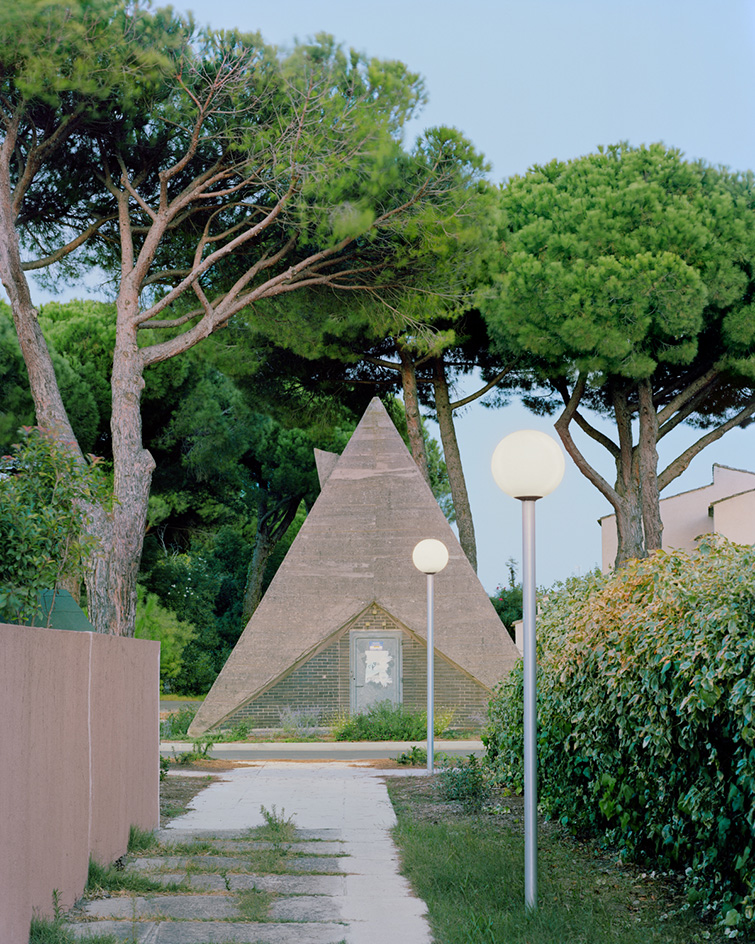
We also found a garden city. Upon our arrival, we felt a refreshing sensation, as if entering a forest with exotic notes. The vegetation was lush and abundant, contrasting with the drier landscapes nearby. La Grande Motte is a true ‘Oasis City’, where immersion in nature and the wellbeing of its inhabitants are at the heart of its urban philosophy.
La Grande Motte is a true ‘Oasis City’, where immersion in nature and the wellbeing of its inhabitants are at the heart of its urban philosophy
Laurent Kronental and Charly Broyez
It is one of the greenest resorts in Europe, serving as a source of inspiration for the city of tomorrow. Vegetation covers 70 per cent of its territory, and nearly 50,000 trees have been planted since its construction. To protect this nature, the buildings have been staggered to slow the winds laden with mist, salt, and sand, creating a favourable climate for the growth of umbrella pines, plane trees, cypress trees, tamarisks, poplars, laurels, and more.

We were also captivated by the quality of life, the sense of lightness, and the tranquillity that reigns in a city designed for pedestrians and cyclists, promoting gentle strolls. The aim was to limit car access at the city’s entrance. As early as the 1960s, Jean Balladur understood the importance of returning to a pace of life, conducive to contemplation and relaxation. He designed a city at the scale of the walker, with over 25 kilometres of non-motorised paths and trails.
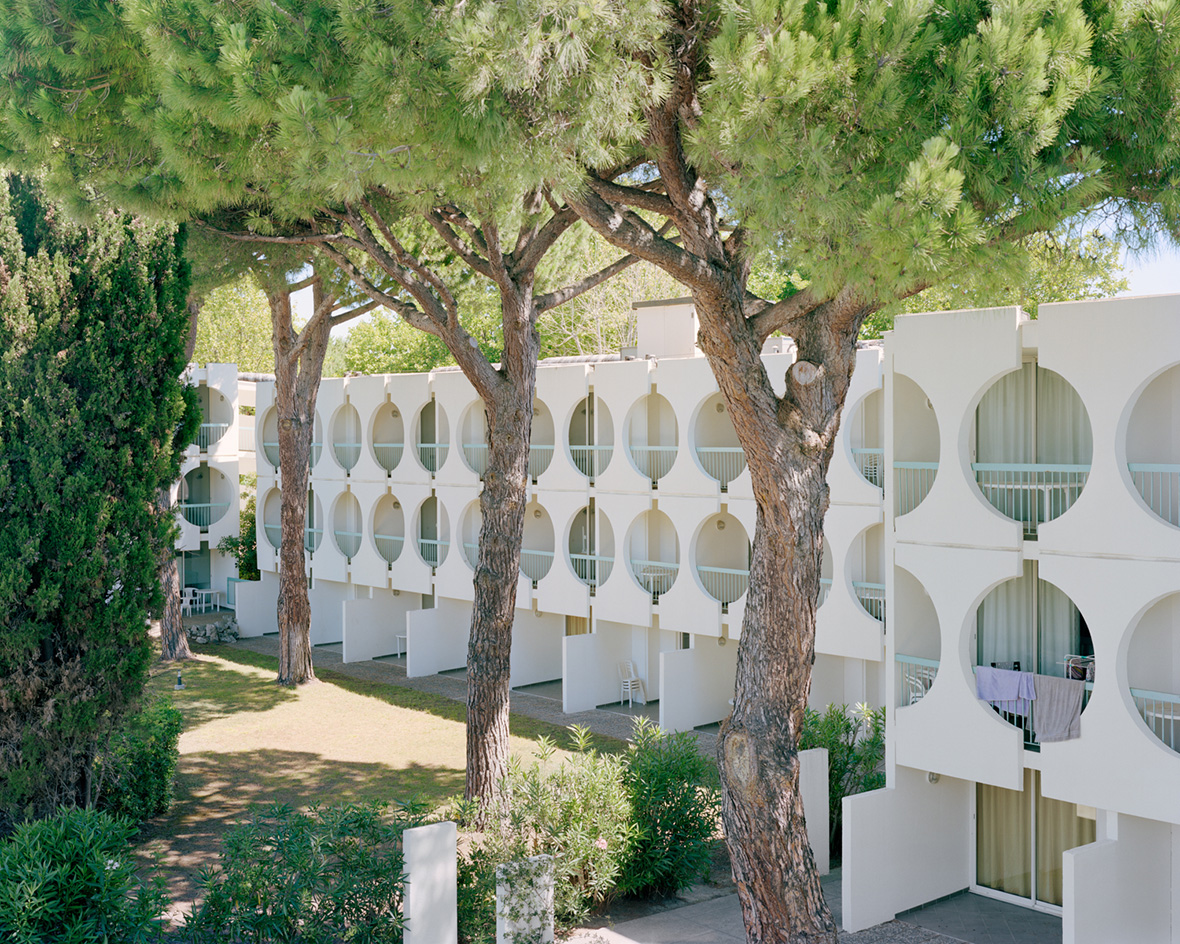
W*: What do you think of its architecture? Why is it important in your view?
LK & CB: The architecture of La Grande Motte is unique in the world. It is steeped in symbolism: pyramids inspired by Maya and Inca civilisations, a fertile dialogue between void and fullness, between the mineral quality of concrete and the greenery of landscaped areas, an equilibrium of opposites, inside and outside, masculine and feminine, East and West. In the 1960s, 70s, and 80s, the city faced criticism for its excessive concrete use. However, Jean Balladur and his teams, accompanied by landscape designer Pierre Pillet, anticipated a green city ahead of its time, whose vegetation would only flourish fully half a century after the resort's construction. The architect envisioned ‘rebuilding a paradise, overrun by greenery’.
Inspired by his travels in Central America, he drew parallels between the pre-Columbian temples of Mexico and their surrounding landscapes. He visited the archaeological site of Teotihuacan, which influenced the design of La Grande Motte. He then imagined truncated pyramids. Their stepped form offers several advantages: it provides residents with large terraces to enjoy the sun and creates a continuous movement from the ground to the building, reestablishing an artificial relief on a linear and horizontal Languedoc coast.
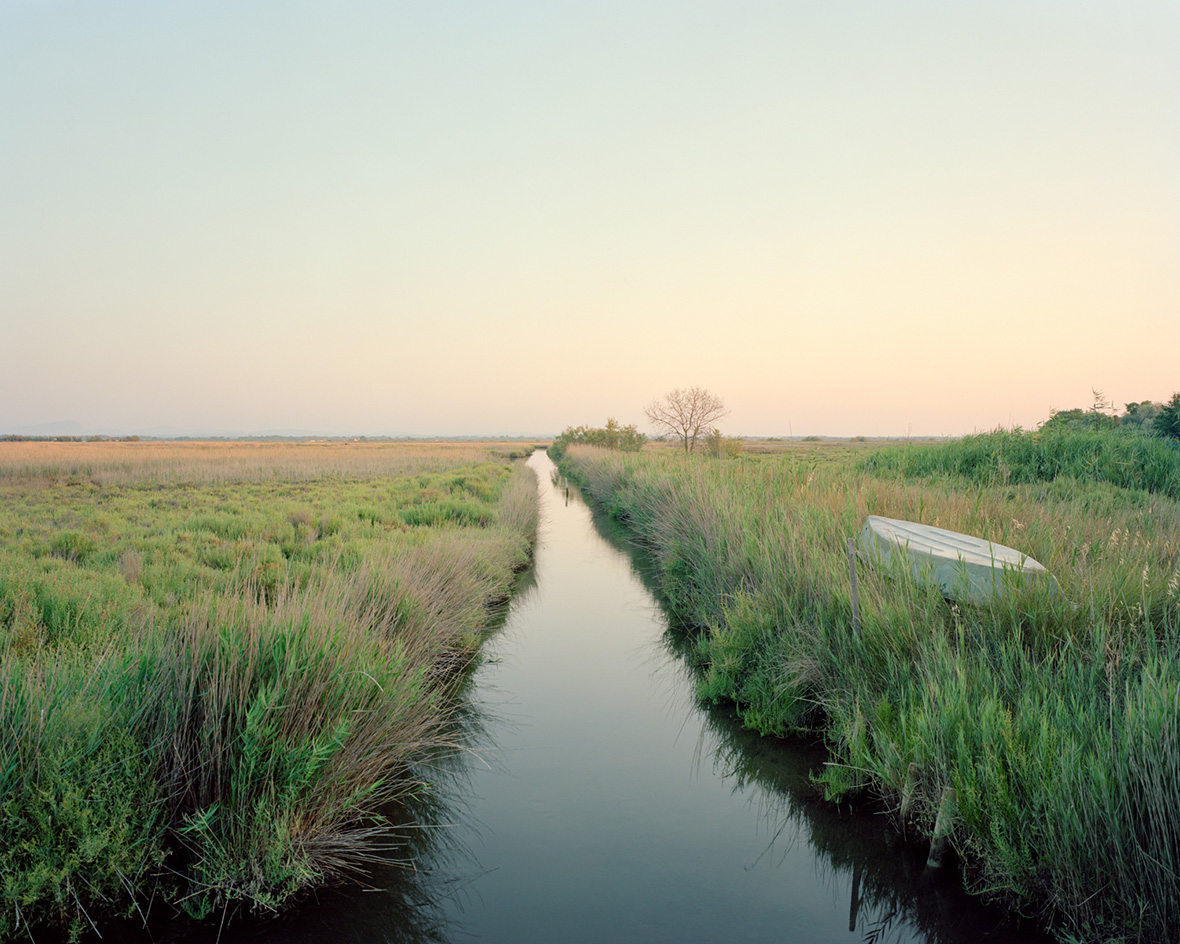
La Grande Motte was designed on a human scale, where every element reflects the architect's particular attention to the wellbeing of its inhabitants. This omnipresent philosophy seeks to avoid the creation of a city without history, past, or memories.
Jean Balladur said: ‘I attempted to compensate for this lack and to substitute symbolic backdrops for historical deficits. I embedded them in the shape of some buildings and places. Their appearance refers to a concrete or geometric image whose meaning derives from an archetypal idea inscribed in our unconscious since ancient times. The walker or resident then plays hide-and-seek with the mythical underpinnings hidden within.’
Balladur’s architecture is also the work of a plastic artist, endowed with a keen sense of forms, light and shadows, textures, and depth. It invites dreaming and escape. In 2010, the resort received the 20th-century heritage label for its remarkable contemporary architecture. This distinction is awarded to the entire city conceived as a total and timeless work of art. Few architects have managed to envision a city from its layout to its realisation, including the choice of its furniture and vegetation.
Few architects have managed to envision a city from its layout to its realisation, including the choice of its furniture and vegetation
Laurent Kronental and Charly Broyez

In La Grande Motte, he reinvented modern modénature. Modénature refers to the ornaments found on the façades of buildings, a concept used since antiquity. On his pyramids, he used prefabricated moulded concrete latticework. Its utility is multifaceted: it enhances the city's aesthetics, creating a graphic rhythm and musicality, while drawing sculptural profiles, animal silhouettes, wave effects, sailboats, sunglasses, and even swimsuits. Modénature also has practical benefits. By framing each loggia, it helps block the wind while providing valuable shade for apartment residents against the sun.
Several neighbourhoods make up the resort. In the Couchant (located to the west), the architect built buildings in the shape of semi-circles, all rounded, contrasting with the straight lines of the Levant (built to the east), with its angular pyramids reaching toward the sky. He named them Conque de Vénus, inspired by Botticelli’s famous painting The Birth of Venus. Here, one can also find ‘bishop's hats’, a specific architectural feature of the area.
At the centre, the Grande Pyramide is one of the most emblematic architectural symbols of the city, rising beside the harbour. With its 15 floors, it establishes a connection between the Couchant and Levant neighbourhoods, and its inverted profile nods to Pic Saint-Loup, a mythical mountain in the region visible from La Grande Motte. Farther east, the Ponant neighbourhood is a true haven of greenery between land and sea, inviting leisurely strolls in the shade of trees and by the water. To the north lies the villa neighbourhood.
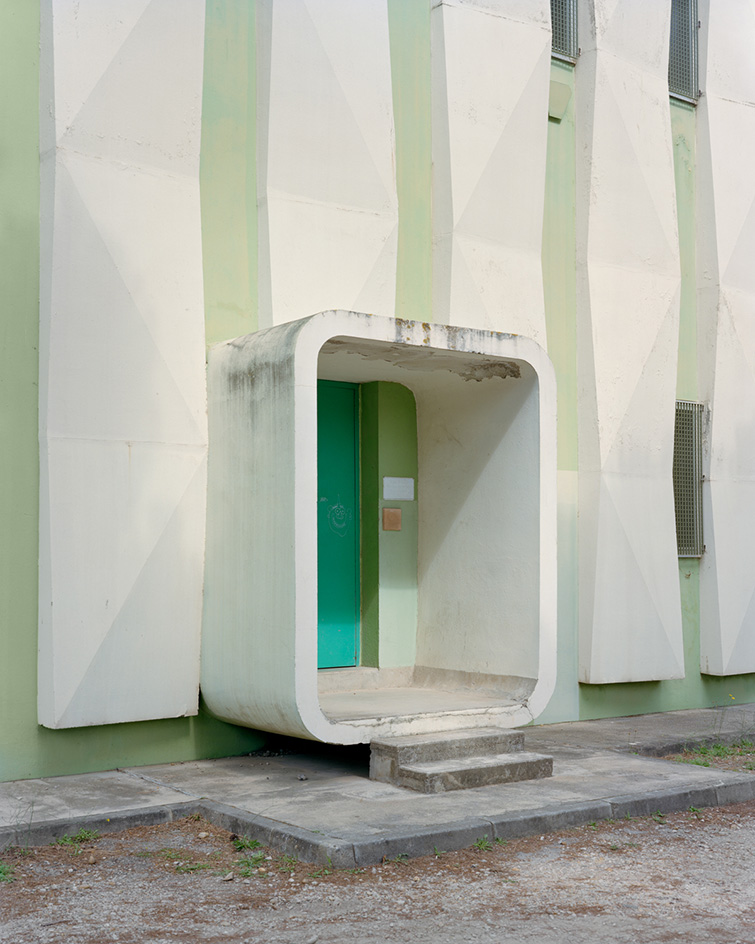
The city is equipped with six pedestrian bridges spanning the roads, each with a distinct personality. The Lampadophores bridge, for example, is topped by large concrete sculptures. These works evoke warriors watching the horizon and carrying light to illuminate the night. This bridge is one of the city’s entrances.
Jean Balladur remarked: ‘La Grande Motte is in a way a sacred place; men and women come here to worship the sun. It is a religion as old as the world, which today sees a resurgence of fervour.’ To celebrate this star, he built the Passerelle Saint-Jean aligned with ‘the clock of the sky’. Each year, on 21 June, the day of the summer solstice, at the same hour, the oculus located between the two pillars of the bridge projects a perfect circle onto the ground, thus aligning the bridge with the celestial rhythm.

In his vision of building an ideal city, the architect decided to add art as an integral part of the project. He collaborated with three artists: Michèle Goalard, Albert Marchais, and Joséphine Chevry. Together, he scattered the public space with numerous works, allowing residents and visitors to encounter them daily. Some of these works also serve practical purposes: playgrounds, fountains, showers, etc.
The names of the buildings contribute to the journey, perpetually stimulating our imagination: the Poséidon, the Babylone, the Eden, the Temple of the Sun, the Fidji, the Inca, the Gardens of Ulysses, the Grande Pyramide, the Bali, the Vasco de Gama, and more.
Jean Balladur, a former student of Jean-Paul Sartre, conceived La Grande Motte, the major work of his life, drawing inspiration from both humanistic and universal values.

W*: What attracted you to photograph it, and how long did it take?
LK & CB: We completed this series over four years and undertook seven trips. The choice of periods in spring and early summer (late May, June, and early July), as well as the beginnings of autumn (September, October), is intentional. These times of year provided a unique atmosphere, far from the tourist bustle, revealing more intimate and poetic aspects of the city. It is during these interseasons that La Grande Motte seems to regain another sense of time, almost meditative, where the architecture subtly interacts with soft light and the surrounding nature.
The project grew richer with each exploration, allowing us to better grasp the essence of the city. This long-term approach also enabled us to cultivate a narrative that transcends visual representation. It is an immersion in a city designed to coexist with nature, revealing its subtleties over time. It invites reflection on how humans can inhabit the world more harmoniously, adapting to natural rhythms.
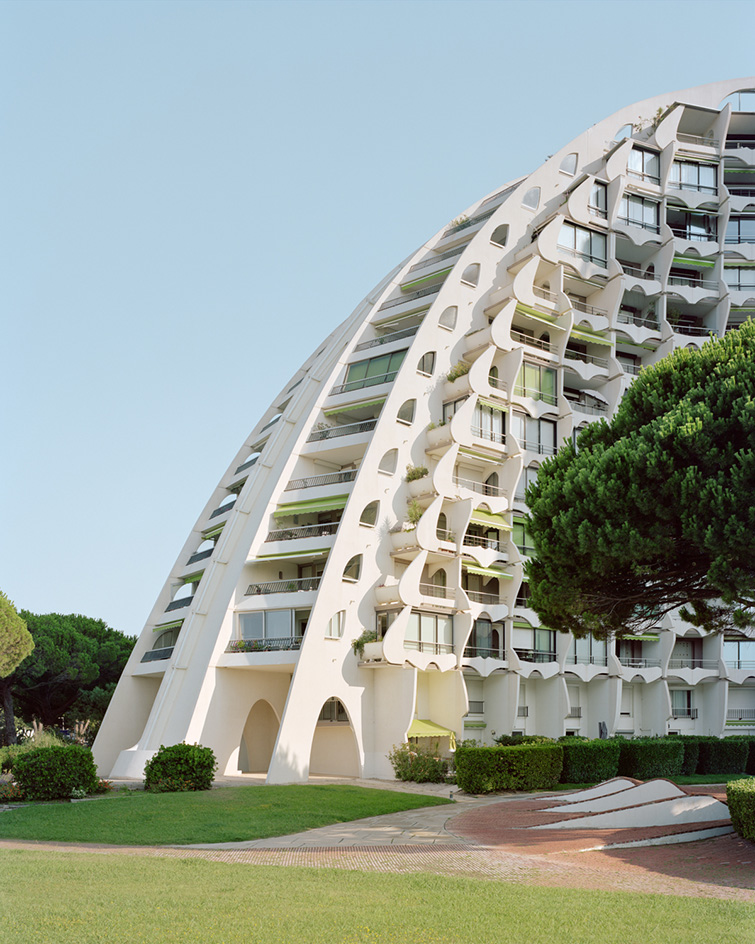
W*: Is it shot digitally or in film? Any special challenges in capturing the series?
LK & CB: We created this project using a large-format 4x5-inch film camera. Working with large-format film encourages us to anticipate the construction of our images like paintings. We compose each element of the image to find the most beautiful harmony, the emotion that aligns with our feelings in the moment.
During our project, we decided to work with a camera for two. It was the first time we collaborated on a long-term project, and we truly appreciated the experience. We can even say it helped us mature and grow in our perspective. Each of us brought our own universe to the other, and we communicated regularly throughout.
We often scout locations in advance, enjoying strolling with our smartphones. We observe the light and how it paints the landscapes and architecture, creating unique atmospheres at different times of the day. We immerse ourselves in the soul of the places we explore and converse with locals to better understand their life journeys, the history of the territory, and its changes. These moments of exchange are invaluable. We often return to the same place multiple times to appreciate its subtleties, discovering new details each time as our perspective shifts and evolves.
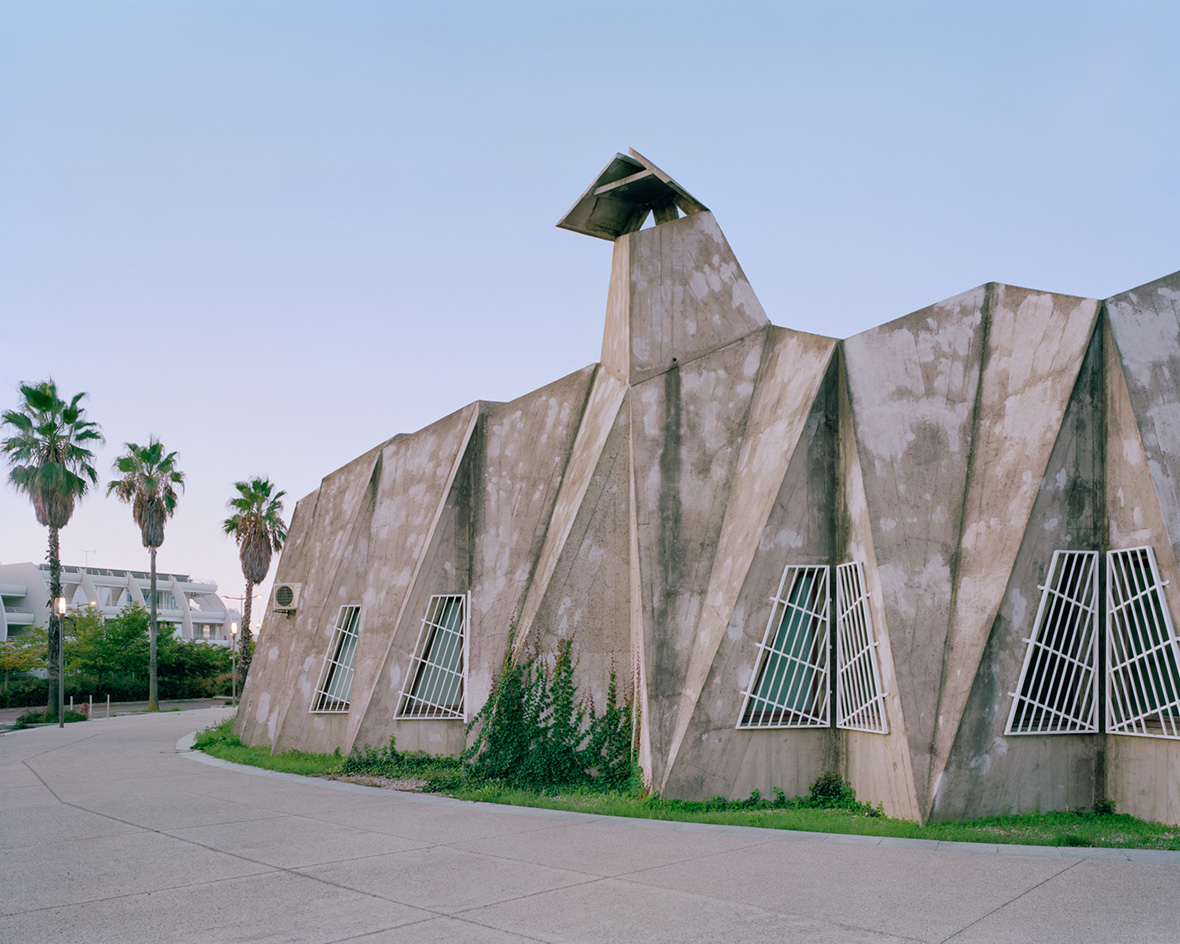
The film camera is a wonderful tool that demands rigour and patience. It compels us to slow down, make choices, and contemplate. It offers an inimitable, precise, and silky rendering, almost cinematic, with beautiful tones and colors. It also allows us to enhance the geometry of an image by shifting our horizon line, revealing parts of the scene while keeping the camera perfectly straight.
Shooting in large-format film is quite expensive, as each photo costs about 15-20 euros to produce (including film purchase, development, and scanning). Therefore, we must be confident in our choices before pressing the shutter. This challenges us to consider whether an image is truly relevant and has a place in the narrative we’re constructing. With digital, we tend to shoot more than necessary and may be less attentive to the moment we are living.
Film also adds a temporal distance between taking a shot and discovering it. Each time, we never know if a photograph will be successful. It's always a surprise (good or bad) when we go to the lab. There are moments when magic happens on a negative, when everything aligns, and other times when, due to a technical issue, a moment of inattention, or poor lighting, the image fails.

W*: Do you often photograph modernist architecture? What makes this architectural movement special to capture through photography for you?
LK & CB: La Grande Motte is an architectural UFO, defying classification. It is neither truly modern nor postmodern, although it directly draws inspiration from these movements. Jean Balladur was trained in the legacy of the modern movement, specifically by the architect Ludwig Mies van der Rohe. However, he distinguished himself by breaking away from this tradition. His work at La Grande Motte is both standardised and whimsical, understated yet sculptural, minimalist yet ornate.
It follows in the footsteps of two iconic modernist cities: Brasilia and Chandigarh, which can be considered its older sisters. Brasilia was built by Oscar Niemeyer and Lucio Da Costa in the heart of Brazil. At the foot of the Himalayas in India, Le Corbusier constructed Chandigarh. Jean Balladur transformed the marshes and sands of the Languedoc coast in France to bring La Grande Motte to life.
These three cities share similarities. They were designed from scratch. Today, they prompt us to reflect on the place of humans within the urban environment and the promise of a utopia. Each was born from a social, historical, and economic context conducive to its construction. Jean Balladur was inspired by the combination of modernity and lyricism in Brasilia. Oscar Niemeyer took the liberty of breaking away from right angles, imagining atypical volumes and departing from functionalist forms to create curves and undulations using concrete. Balladur would reuse this noble, flexible, and decorative material.
We both share a common interest in certain architectural movements, but also have more specific research areas that are unique to us and resonate with our respective journeys.

W*: What do you hope people will take away from seeing your series?
LK & CB: The architecture, where water and concrete merge into a single flow, suggests the fullness of both being and the world. To give a past to a city that had none, Jean Balladur planted the roots of a new city in this untouched land. He now offers us a reverie on the permanence of dreams and the utopia of human grandeur.
This series, beyond its aesthetic pursuit, invites us to see La Grande Motte as a living space and a crystallisation of sensations. As a symbol of a dreamer's soul, it transforms the vacationer, resident, or spectator into a fortunate person who, like Ulysses, has made a beautiful journey.
We seek to retrace the history of La Grande Motte, from its inception. At that time, the Languedoc coast was still scarcely developed, partly marshy and infested with mosquitoes. We emphasise the natural beauty of this region, located at the gateway to the Camargue, by immortalising the landscapes of the Pays de l’Or, with their marshes, huts, and traditions.
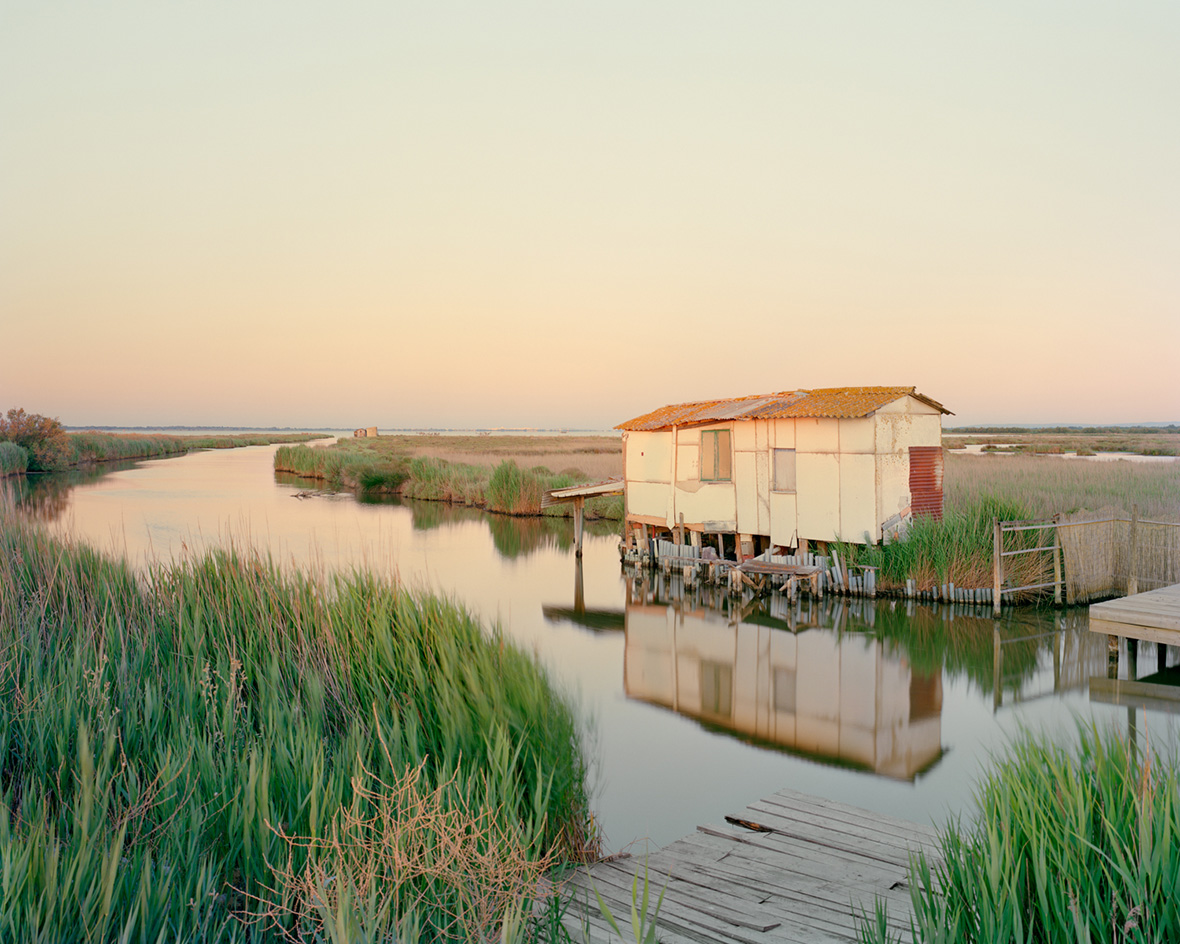
Two ways of living meet here: La Grande Motte is a realised utopia, a true Garden of Eden where inhabitants seek happiness in a city designed as an ideal.
Just a few kilometres away, the huts offer a striking contrast to the architecture and urban ambitions of the seaside resort. Built with recycled materials, they embody human ingenuity and an intimate connection with the land, symbolising an alternative, marginal way of life. At the time, they were mainly used to store tools and provide shelter for fishermen and hunters. However, over time, they evolved, transforming from simple utilitarian shelters into secondary or even primary residences, illustrating the shift in the inhabitants' expectations and usage.
The project of creating a dialogue between these two worlds intrigued us. Bringing together these universes, which seem so distant yet share the same territory, would allow us to explore the region's transformations. It would also question our relationship with the past and present, our ability to evolve while preserving the legacy of older ways of life. By linking these huts, witnesses of a frugal lifestyle, with the visionary architecture of La Grande Motte, the aim is to understand the dynamics of the transformation of a territory, where human history and architectural history overlap and enrich each other.
This dialogue could be a reflection on how the evolution of our lifestyles influences the way we inhabit the earth, by confronting more modest, ancient practices with modern approaches. The challenge is to find synergies between these two worlds, to explore how tradition and innovation can coexist to shape a new way of inhabiting territories.
Ellie Stathaki is the Architecture & Environment Director at Wallpaper*. She trained as an architect at the Aristotle University of Thessaloniki in Greece and studied architectural history at the Bartlett in London. Now an established journalist, she has been a member of the Wallpaper* team since 2006, visiting buildings across the globe and interviewing leading architects such as Tadao Ando and Rem Koolhaas. Ellie has also taken part in judging panels, moderated events, curated shows and contributed in books, such as The Contemporary House (Thames & Hudson, 2018), Glenn Sestig Architecture Diary (2020) and House London (2022).
- Laurent Kronental & Charly BroyezPhotographers
-
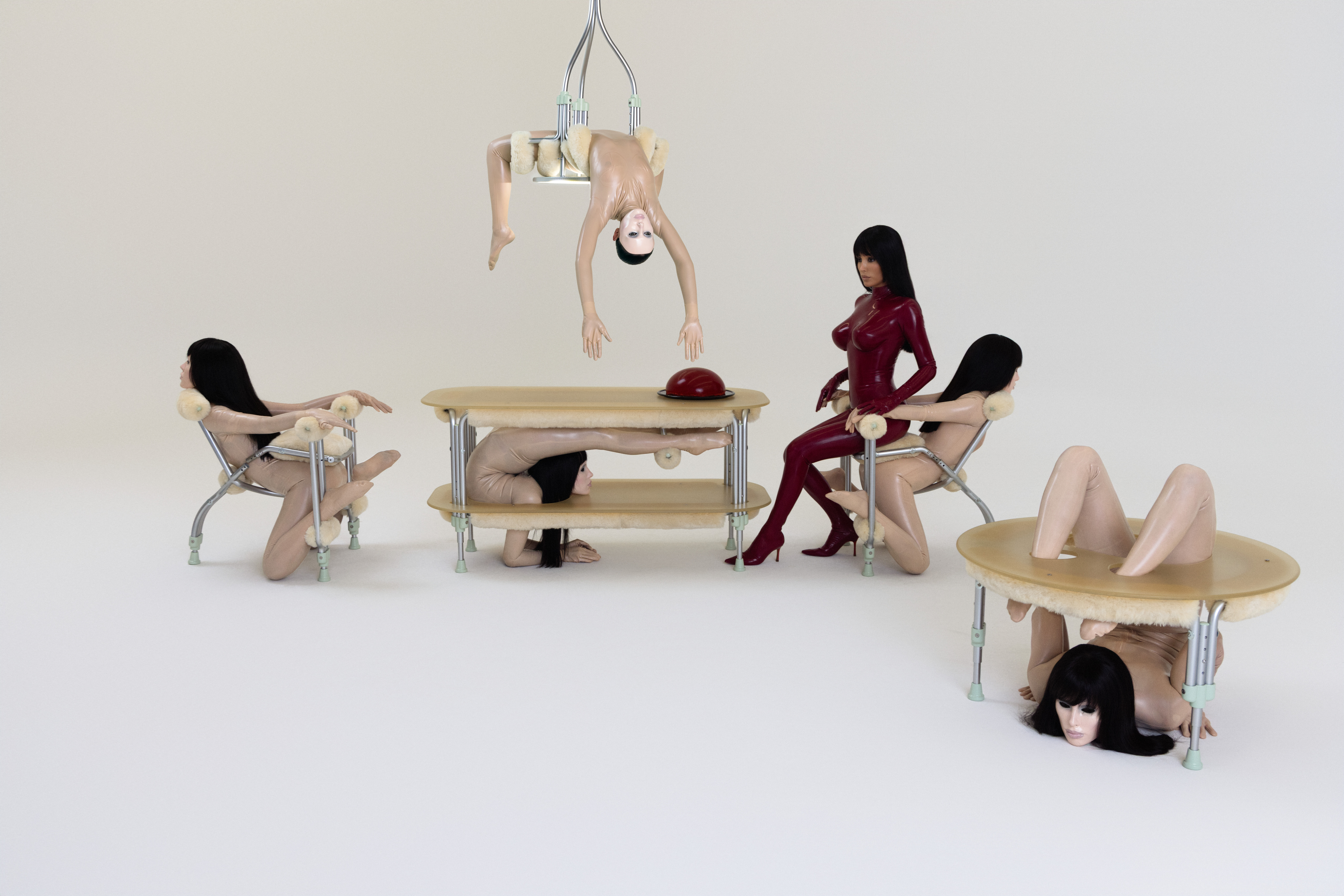 Eight questions for Bianca Censori, as she unveils her debut performance
Eight questions for Bianca Censori, as she unveils her debut performanceBianca Censori has presented her first exhibition and performance, BIO POP, in Seoul, South Korea
-
 How to elevate a rental with minimal interventions? Charu Gandhi has nailed it with her London home
How to elevate a rental with minimal interventions? Charu Gandhi has nailed it with her London homeFocus on key spaces, work with inherited details, and go big on colour and texture, says Gandhi, an interior designer set on beautifying her tired rental
-
 These fashion books, all released in 2025, are the perfect gift for style fans
These fashion books, all released in 2025, are the perfect gift for style fansChosen by the Wallpaper* style editors to inspire, intrigue and delight, these visually enticing tomes for your fashion library span from lush surveys on Loewe and Louis Vuitton to the rebellious style of Rick Owens and Jean Paul Gaultier
-
 The Architecture Edit: Wallpaper’s houses of the month
The Architecture Edit: Wallpaper’s houses of the monthFrom wineries-turned-music studios to fire-resistant holiday homes, these are the properties that have most impressed the Wallpaper* editors this month
-
 This modernist home, designed by a disciple of Le Corbusier, is on the market
This modernist home, designed by a disciple of Le Corbusier, is on the marketAndré Wogenscky was a long-time collaborator and chief assistant of Le Corbusier; he built this home, a case study for post-war modernism, in 1957
-
 Louis Kahn, the modernist architect and the man behind the myth
Louis Kahn, the modernist architect and the man behind the mythWe chart the life and work of Louis Kahn, one of the 20th century’s most prominent modernists and a revered professional; yet his personal life meant he was also an architectural enigma
-
 The Architecture Edit: Wallpaper’s houses of the month
The Architecture Edit: Wallpaper’s houses of the monthFrom Malibu beach pads to cosy cabins blanketed in snow, Wallpaper* has featured some incredible homes this month. We profile our favourites below
-
 ‘You have to be courageous and experimental’: inside Fondation Cartier’s new home
‘You have to be courageous and experimental’: inside Fondation Cartier’s new homeFondation Cartier pour l'art contemporain in Paris invites us into its new home, a movable feast expertly designed by Jean Nouvel
-
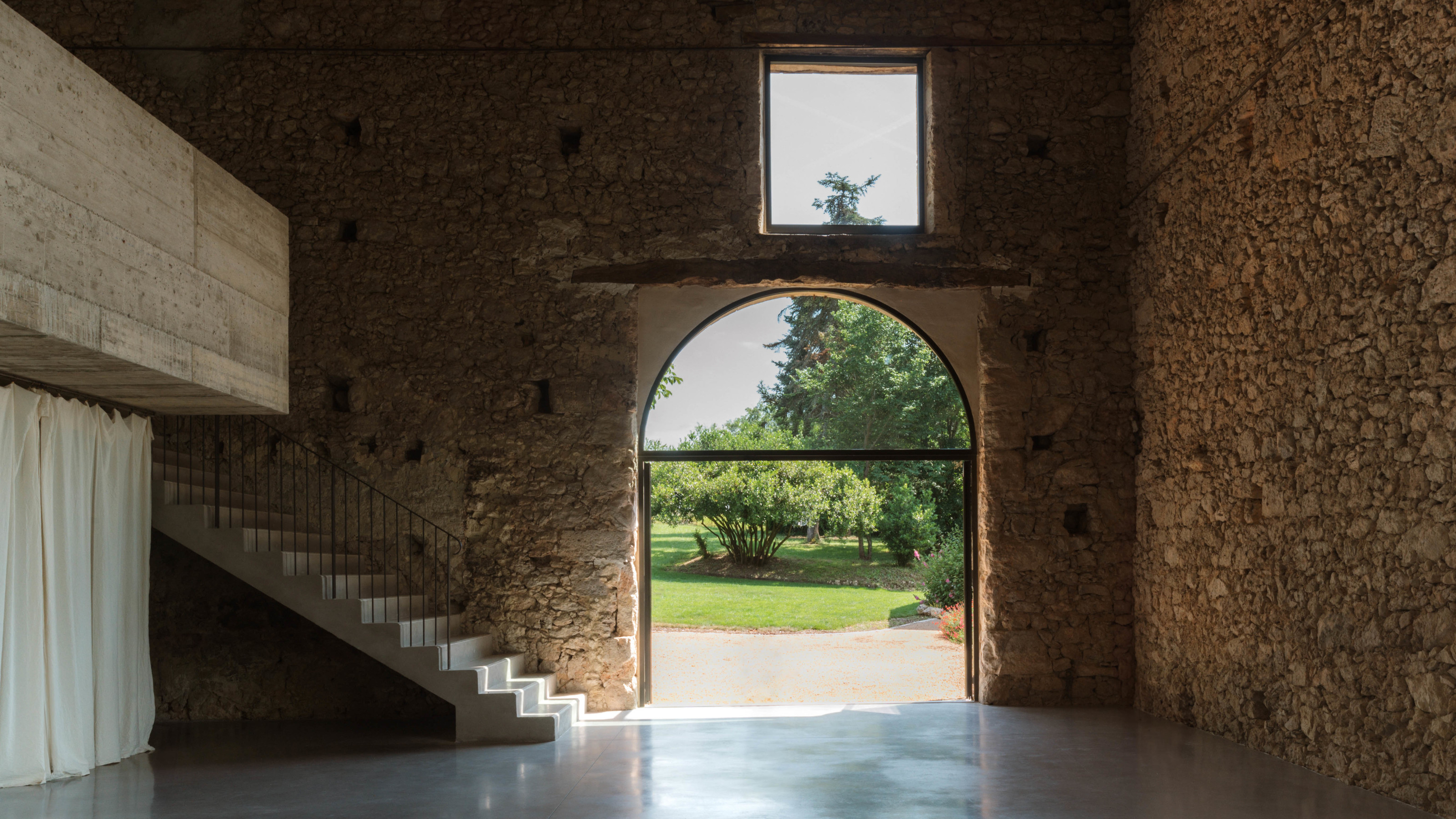 A wellness retreat in south-west France blends rural charm with contemporary concrete
A wellness retreat in south-west France blends rural charm with contemporary concreteBindloss Dawes has completed the Amassa Retreat in Gascony, restoring and upgrading an ancient barn with sensitive modern updates to create a serene yoga studio
-
 Three lesser-known Danish modernist houses track the country’s 20th-century architecture
Three lesser-known Danish modernist houses track the country’s 20th-century architectureWe visit three Danish modernist houses with writer, curator and architecture historian Adam Štěch, a delve into lower-profile examples of the country’s rich 20th-century legacy
-
 The Architecture Edit: Wallpaper’s houses of the month
The Architecture Edit: Wallpaper’s houses of the monthThis September, Wallpaper highlighted a striking mix of architecture – from iconic modernist homes newly up for sale to the dramatic transformation of a crumbling Scottish cottage. These are the projects that caught our eye